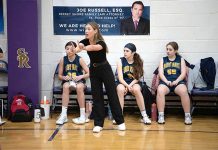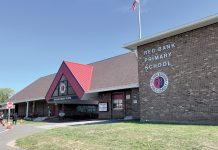
By Elizabeth Wulfhorst
RED BANK – How does a young person find their passion, choose what career path they want to follow? Administrators and staff at Red Bank Catholic High School are hoping they can help answer that question with a new educational program to be introduced this fall.
The Pathways Program will help students identify and experience potential career paths with in-person and online courses, mentorships and specialized projects.
Many of the aspects of The Pathways Program were already in place at Red Bank Catholic (RBC), such as mentorships and capstone projects (similar to a college thesis), said Robert Abatemarco, the school’s principal. But about two and a half years ago the administration began looking at 21st-century educational trends and realized they needed “to codify and formalize the process of giving kids the option of planning out a pathway in areas that they might be interested in,” Abatemarco said.
Before the introduction of The Pathways Program, not every student could take advantage of internship and capstone project opportunities. “But we want the entire student body to have access to this and look at it as a possibility, so every kid can see this and say, you know, that’s something I might want,” said Abatemarco.
Assistant principal Karen Falco, Matt Bowen, website manager and a teacher in the history and social science department, and Margaret Boland, director of learning and innovative design, were an integral part of bringing the program to life.
Bowen said the benefits to the students are boundless and he is excited to be a part of the program’s formation.
“What I enjoyed about the process of putting this together was that I would have the opportunity as a senior level teacher, as part of this program, to be able to help guide some of these students from an earlier stage in their academic career,” Bowen said, noting that sometimes he wouldn’t even meet a student until their senior year when they entered his classroom for the first time. That didn’t give him many options – or much time – to work with a student to cultivate a possible interest in criminology, say, a subject he teaches.
The new program gives students the opportunity to seek out courses they might not have previously considered, beyond the traditional math, English and history. As more students opt into the program, the curriculum will grow and change to fit students’ interests.
“Right now, we are working within the courses already offered in our curriculum. But we always increase our curriculum based on needs and wants of the students,” Falco said. In addition to classroom courses, RBC offers an online curriculum through an educational partner. As more students show an interest in certain online classes, the school looks to bring them “into the building,” she said. “For example, we now have 3-D printers and an engineering program, because students were interested in that.”
“As we see interest grow,” Falco said, “we will increase our curriculum to meet the needs of our students.”
The Pathways Program areas include arts, media and entertainment; business and entrepreneurship; criminal justice and law; engineering and design; health and medical sciences; and social science and humanities. Students will work with their guidance counselors and teachers to develop class schedules specific to their interests, find internships and design capstone projects. Those who come in as freshmen knowing what path they’d like to follow are encouraged to enter the program right away, but “by junior year, our expectation is that they make a decision because you know, four years of high school goes very, very quickly,” said Boland.
“As we look at the future for our students, we’re always looking at what is going on in our society, how things are changing, how our students can be helped,” Boland said, noting that a big part of the program is flexibility, which she said is what is needed for the future. That is why the school created a standing committee currently comprised 17 people with different stakeholder positions in the RBC community. This committee will continue to analyze and evaluate the program’s success and education trends, Boland explained.
A ninth grader may think they want to be a doctor, but by 11th grade that same student may want to be an accountant or a novelist, she noted, so the administration isn’t trying to have students make a formal decision about a career path, like declaring a major in college. They want students to have the chance “to look at who they are, what their potential is,” Boland said. “The big piece here is we want to offer them an opportunity to grow in different ways.”
All students will still take foundational courses, but, Abatemarco said, “this is not the old model of education.”
“We’ve got to start preparing kids to be flexible,” he said, developing their curiosity by letting them experiment to reach their potential.
This article originally appeared in the March 11 – 17, 2021, print edition of The Two River Times.














